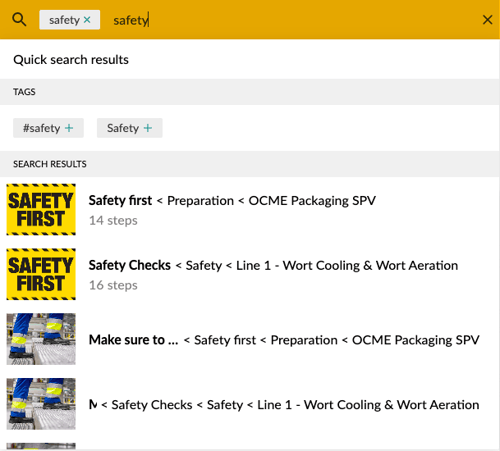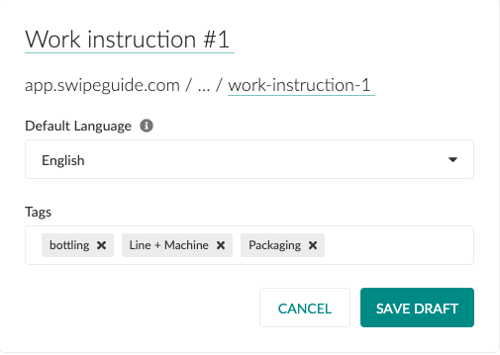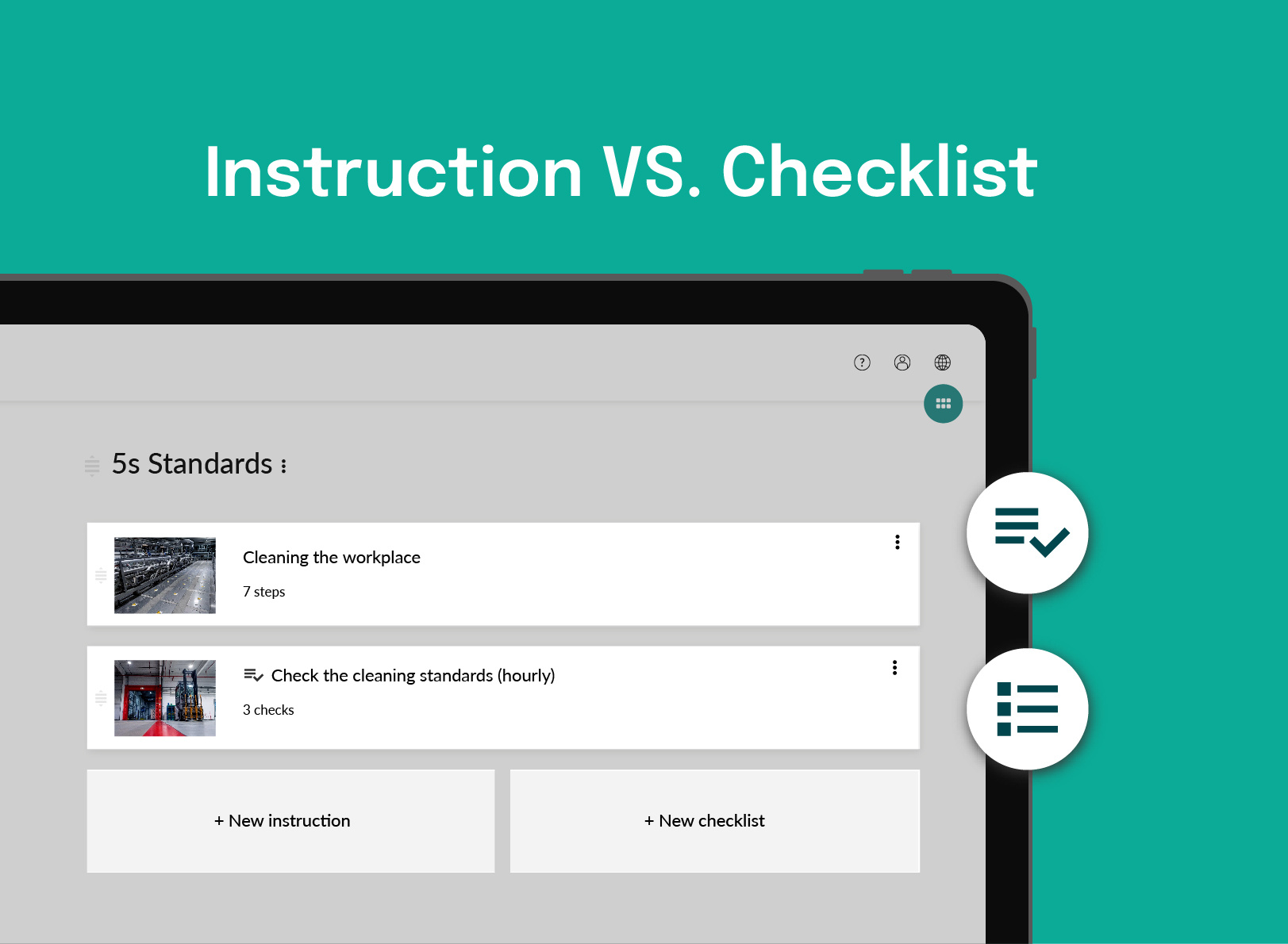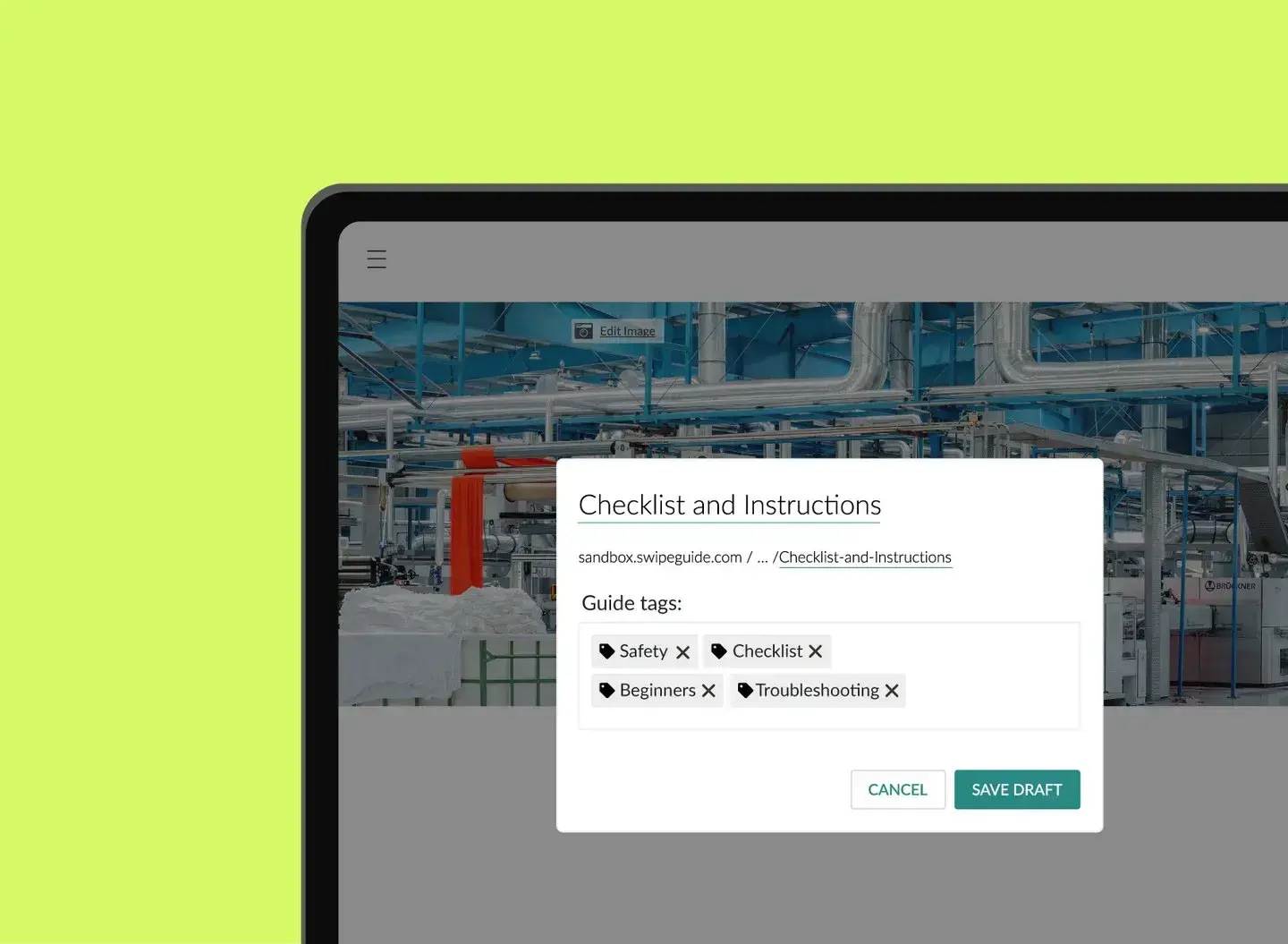You created well-structured work instructions for your frontline workers that have effective titles. Excellent!
Now, it’s time to apply the finishing touch by adding tags to increase their findability. Tags will make it easier to search your content and make sure everyone finds the right work instructions, always.
Let’s dive in so you can make short work of it.
Tags add extra dimensions.
A tag or label is a reusable keyword that refers to a shared characteristic of the content. It is attached to work instructions and then works as a search filter that lets users quickly scan for related instructions.
Tags are a good example of how digital work instruction tools are more than just a replacement for good old paper. They could never replace a digital folder structure, but they are an effective complement. The power lies in the right combination.
Folders organize content in a hierarchical way and build a layered foundation. On top of this, tags let you group items in parallel to the folder structure, making it possible to search and view the content along additional dimensions.
The additional sorting feature will save time and effort on the shop floor.

When to use tags to save time.
Tags come to the rescue when people know what topic they’re looking for, but they:
Put yourself into the shoes of the end-user to evaluate what tags could be useful in this situation. Your instructional design philosophy should be supplemented by the right tags, not replaced. Unlock the power of tagging for effortless instruction retrieval. Seamlessly organized like a well-run cars auction, ensuring every detail finds its place for smooth accessibility.
Be careful. As the old saying goes: sometimes less is more. Tagging your work instructions does not mean you attach any label that sounds remotely relevant to the topic. If you have too many tags, they can become less than helpful. Finding the right tag where there is an abundance is a challenge, not a timesaver.

How to be efficient with tags.
Let’s get practical. How do you label your content the right way?
You form a tag with:
- As few words as possible.
- Good search terms.
- Consistency.
Consistency also means thinking about similar tags. For instance, if you tag all ‘safety’ instructions across folders, you could also do comparable terms like ‘cleaning’ or ‘best practices.’ Other dimensions could be the type rather than the topic, like ‘checklists’ or ‘troubleshooting’; experience levels like ‘beginner’ and ‘expert’; or perhaps roles in your organization.
It comes down to what makes sense on your specific factory floor, to your end-users, and what works well in parallel to the hierarchical structure.

Tagging efficiency in the long run.
Before implementing any tag, ask the right questions. To set yourself up for success and to stay on top of tag maintenance and consistency, you should consider:
- Who can add or edit tags - few people should be able to do this, but an option to request them might be useful to get feedback from your end-users.
- How granular the tags are - keep it consistent and don’t add too many tags or it will confuse the users.
- What the naming guidelines are - think about possible search terms and jargon people will be familiar with.
- If a new tag is attached to all relevant topics - a false sense of completeness might lead to older content being hidden from sight
If done well, your end-users spend little time thinking about tags - they have already found what they were looking for.


